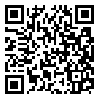BibTeX | RIS | EndNote | Medlars | ProCite | Reference Manager | RefWorks
Send citation to:
URL: http://jdm.tums.ac.ir/article-1-12-en.html
Background and Aims: One of the decisive factors on the final esthetic results of implant treatment is the abutment material. Ceramic abutments are nowadays very popular in this regard. The purpose of this study was to compare the fracture resistance of three zirconia abutments with titanium abutment.
Materials and Methods: Four groups of abutments (five specimens in each) were prepared. The abutments were prefabricated titanium, prefabricated zirconia, zirconia-metal, and copy-milled zirconia abutment. After securing the abutments to the implant using a torque of 24 Ncm, they were mounted into a mounting jig using the 30º tilt. The force was applied on the assembly till the failure occured. Facture resistance and mode of failure were recorded for each specimen. The data were analyzed using One-way ANOVA.
Results: The mean values recorded for fracture resistance of different zirconia abutments varied between 426 to 688 N however, there was no significant differences among the groups (P=0.14). Body fracture was observed only in prefabricated zirconia abutments. Screw fracture and screw bending were the common failures observed in other groups.
Conclusion: Zirconia abutments of any type could be successfully used in regular plateform implants.
Received: 2012/06/12 | Accepted: 2013/01/4 | Published: 2013/09/16
| Rights and Permissions | |
 |
This work is licensed under a Creative Commons Attribution-NonCommercial 4.0 International License. |




